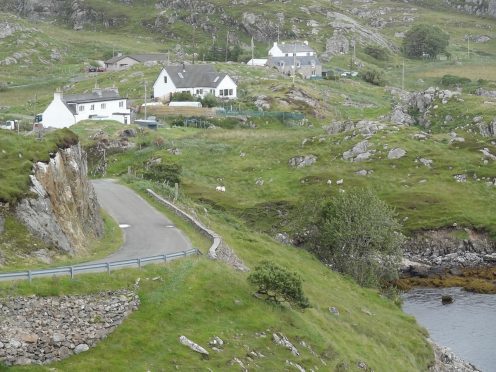A community is finally to get its say on an estate buyout that promises to breathe new life and jobs into a once thriving area of the Highlands, now its owners have agreed to sell.
A ballot process involving a Western Isles crofting estate once owned by a founder of the Unilever empire was previously sidelined.
It has emerged that the Bays of Harris is now up for grabs after the owners’ acceptance of a trend towards community ownership, particularly in the Hebrides.
The estate is owned by the Hitchcock family who bought it in 1925 for £5,000 after the death of Lord Leverhulme, a founder of what is now the Unilever multinational giant.
Held back since 2014, the outcome of a feasibility study will be used as a blueprint for the economic and social regeneration of the 30,000-acre area.
Blighted by severe depopulation, the estate has an ageing community and decreasing number of young people.
Residents say there is a “dire lack of jobs” and what work exists is dominated by small scale creel fishing, tourism and public sector employment.
Neighbouring buyout estates like West Harris and North Harris including the Scalpay takeover, have enjoyed a new-found drive for regeneration and development once the land was in communal ownership.
Pros and cons of the community buyout will be examined before villagers will cast their vote whether to purchase the land or leave things as they are.
Buyout steering group chairman John Maher said: “The group has been communicating with the four landlords in order to obtain the required detailed information regarding the Bays of Harris Estate.
“Sufficient facts and figures have now been obtained for the feasibility study to be completed.”
A series of public consultation meetings will be held where a summary of the report will be presented to the wider community.
Mr Maher added: “It has taken a long time to reach this point due to the complexity of the composition of the Bays of Harris Estate.
“The steering group is looking forward to taking the report to the 700 residents within the estate.”
The group has pledged to invest the income from the estate in projects decided upon by the residents “for the long term benefits of the community.”
Campaigners’ focus has been on ways of boosting housing, local economics and crofting to help regenerate the area.
Despite its name, the Bays of Harris estate covers vastly more than the rugged east coast of Harris.
It is unusual as it is split into three separate tracts of land, segregated by land and sea, in the middle of the Outer Hebrides.
It runs from Direcleit towards Leverburgh, the main settlement in South Harris, which is also the port for the ferry to Uist.
A separate parcel of land at Northon is landlocked between two other estates.
Across the Sound of Harris, is the Isle of Berneray as well as the uninhabited Hermetray group of islands off North Uist, which are also included.
If a buyout was successful it would take the majority of Harris under community ownership and leave three other communities, Rodel lands, Leverburgh lands and Kyles Leverburgh in private ownership.
